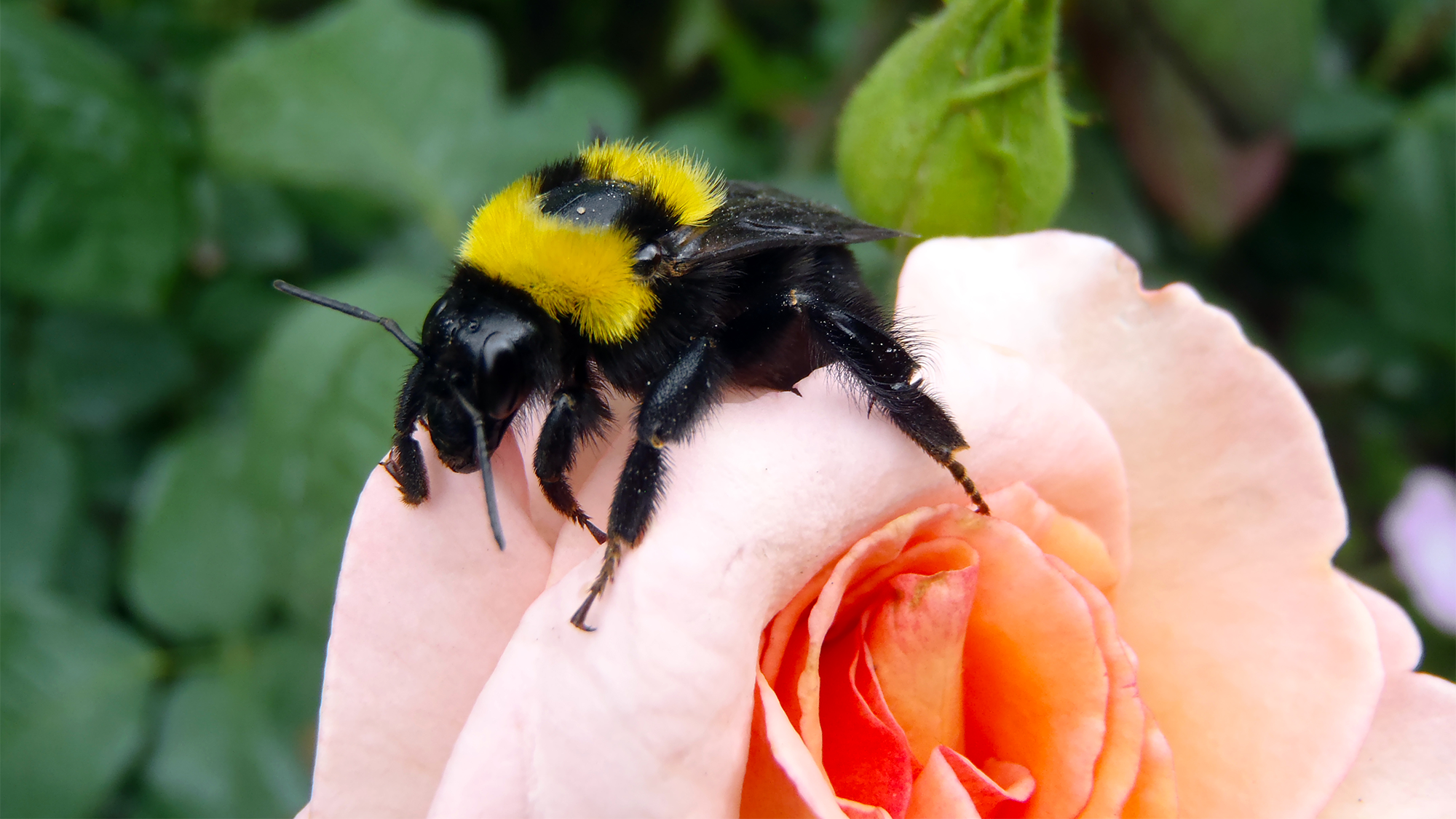

Some of our planet’s power pollinators may have originated tens of millions of years earlier than scientists once believed. In a study published July 27 in the journal Current Biology, a team of researchers traced bee genealogy back over 120 million years to the ancient supercontinent Gondwana. This former continent includes parts of present day Africa, Madagascar, South America, Australia, Antarctica, India, and Arabia, and it began to break apart during the early Jurassic period about 180 million years ago.
[Related: Bee brains could teach robots to make split-second decisions.]
While looking deeper into bee history, the team found evidence that bees originated earlier, diversified faster, and spread wider than previously suspected, putting together pieces of a puzzle on the spatial origin of these pollinators. They likely originated in parts of present day Africa and South America before Gondwana broke apart.
In the study, an international team of scientists sequenced and compared genes from over 200 bee species. They then compared these bees with the traits from 185 different bee fossils and extinct fossils to develop an evolutionary history and genealogical model for how bees have historically been spread around the world. The team was able to analyze hundreds of thousands of genes at a time to make sure that the relationships they inferred were correct.
“This is the first time we have broad genome-scale data for all seven bee families,” study co-author and Washington State University entomologist Elizabeth Murray said in a statement.
Earlier studies established that the first bees potentially evolved from wasps, transitioning from predators up to collectors of pollen and nectar. According to this study, bees arose in the arid regions of western Gondwana during the early Cretaceous period, between 145 million years ago to 100.5 million years ago.
“There’s been a longstanding puzzle about the spatial origin of bees,” study co-author and Washington State University entomologist Silas Bossert said in a statement. “For the first time, we have statistical evidence that bees originated on Gondwana. We now know that bees are originally southern hemisphere insects.”
The team found evidence that as new continents formed, the bees moved northward. They continued to diversify and spread in parallel partnership with flowering plants called angiosperms. The bees later moved into India and Australia and all major bee families appear to have split off from one another before the beginning of the Tertiary period (65 million years ago).
[Related: Like the first flying humans, honeybees use linear landmarks to navigate.]
The team believes that the exceptionally rich flora in the Western Hemisphere’s tropical regions may be due to their longtime association with bees. About 25 percent of all flowering plants belong to the large and diverse rose family of plants, and these beautiful flowers make up a large share of the tropical and temperate hosts for bees.
The team plans to continue sequencing and studying the history and genetic profiles of more species of bees. Understanding how flowering plants and bees evolved together can help inform conservation efforts for pollinators and how to keep their populations healthy.
“People are paying more attention to the conservation of bees and are trying to keep these species alive where they are,” said Murray. “This work opens the way for more studies on the historical and ecological stage.”